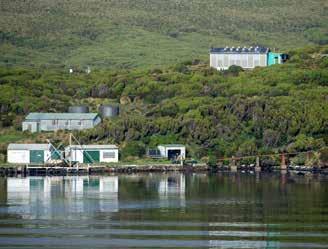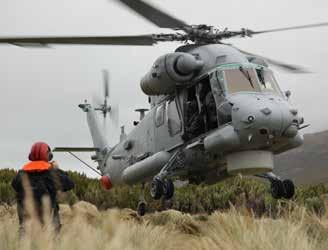
1 minute read
CHEATING THE PEAT, STOPPING CHOPPERS BOGGING ON CAMPBELL ISLAND
Peat is the surface organic layer composed of partially decomposed plant matter, which has generally accumulated under waterlogged conditions.
At Col Lyall on Campbell Island, Sir Peter Blake Trust researchers discovered the soggy peat, which is generally oxygen deficient and acidic, went down to a depth of 3.3 metres. Such peat covers most of the island.

In short, it’s soft and deep and you wouldn’t want to land a heavy helicopter in it for too long.
As such, Operation Endurance was limited to dropping underslung loads and touch-and-go deliveries of people and equipment by the Seasprite.
“They landed on this mission but the wheels sunk into the mud by about half a foot. It’s not something you could regularly land and take off from,” said Corporal Laochailan McGregor, section commander of 25ESS of the Royal New Zealand Engineers.
The plan is to establish a more suitable helicopter landing pad at Beeman Cove, the main centre of Campbell Island, the site of DOC and MetService buildings. This will allow heavier helicopters, such as the NH90 and others, to properly land and unload.

So the NZ Army engineers on Op Endurance, in the short time they were on the island, evaluated three potential sites for the pad. They were looking at the aerial approach and exit areas, site access and the layout of each site.
Lieutenant Levi Hibbert, troop commander of 2nd Field Squadron, Royal New Zealand Engineers, said the three sites were near an old storage building, a large grass field behind the camp and an old fuel storage concrete pad, which will need a further two tanks to be removed.
“We’ve got all the data we need from that so we just need to go away and do some calculations and reports and see which one would be the best,” LT Hibbert said.
Photos, left to right: A Seasprite SH-2G(I) is carefully guided onto steel plates (out of shot) during a previous Campbell Island mission (2020) in the hope the helicopter won’t sink in.
The main base of Campbell Island at Beeman Cove.









